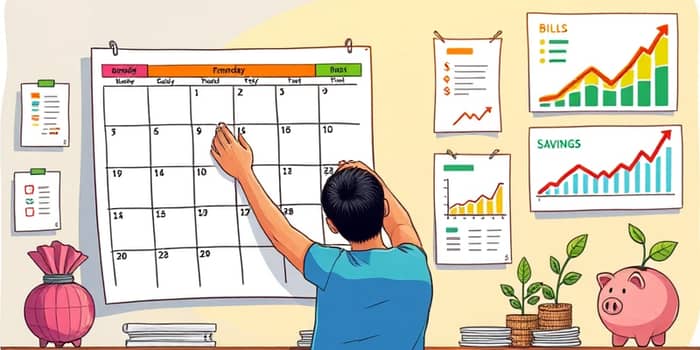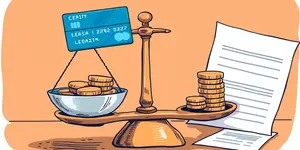
When you welcome new debt into your life, the impact ripples through every aspect of your financial world. Updating your budget becomes not just a recommendation, but an urgent necessity. This guide will equip you with the tools to adapt, stay on target, and even find hidden opportunities for growth.
By cultivating a disciplined approach, you will reduce money-related stress and unlock the ability to make intentional choices. A well-maintained budget can transform uncertainty into confidence and possibility.
Taking on debt can feel empowering when it means investing in a new home, education, or business. Yet without a solid framework, that same debt can spiral into stress. A budget acts as your anchor, creating a clear and actionable financial roadmap that keeps you grounded.
By reviewing your income and expenses, you gain the confidence to manage payments and maintain lifestyle choices while pursuing your goals.
When new debt arrives, your budget becomes a living document that adapts to shifting priorities. It also serves as an early warning system, signaling potential overextension before it becomes a crisis. Maintaining this vigilance preserves your credit score and ensures you can seize future opportunities without hesitation.
When you take on new debt, a systematic approach ensures you stay on track financially. The following steps will guide you through the process:
The first step is gathering data. Start by listing every expense, from fixed costs like rent or mortgage to variable items such as dining and entertainment. Use a spreadsheet, mobile app, or notebook—whatever feels intuitive.
Next, compile all debts, old and new, noting balances, interest rates, and minimum payments. Then calculate your monthly net income after taxes, adding back any payroll deductions for a holistic view.
Compare your total expenses, including the new debt payment, against your income. This simple subtraction reveals whether you face a surplus or a shortfall.
Consider categorizing expenses into essential, discretionary, and debt-related buckets. Color coding or labeling in your tracking tool can make trends obvious at a glance. As you record each purchase, you’ll develop heightened awareness around spending triggers and pressure points.
With hard numbers in hand, it’s time for adjustments. Identify areas to trim without sacrificing well-being.
You might be surprised at how small tweaks add up. For example, swapping a premium cable package for a streaming service or renegotiating your insurance premium can yield immediate savings. Each reduction contributes directly to your flexibility and resilience.
Focus on subscriptions you seldom use and discretionary spending on dining out or impulse purchases. By choosing to cut non-essential spending categories, you free up cash to meet debt obligations.
If trimming expenses still leaves a gap, consider boosting your income. A side gig, freelance work, or negotiating a raise can turn that deficit into positive cash flow.
Allocating resources strategically can accelerate debt freedom. Apply any extra funds toward the highest interest debt to minimize total interest paid over time.
Set up automatic transfers for minimum payments and additional contributions whenever possible. Automate regular debt payments to reduce late fees and maintain consistency.
Two common strategies can accelerate progress: the avalanche method, where you focus extra funds on the highest interest debt, and the snowball method, where you build momentum by paying off the smallest balances first. Choose the approach that aligns with your personality and motivation style.
A concrete illustration can bring these concepts to life. Imagine a monthly net income of $3,500. Fixed expenses amount to $2,000, variable costs run around $800, and existing minimum debt payments total $400. Adding a new loan payment of $350 yields a deficit:
Here, the negative balance of $50 signals the need for immediate action—either reducing costs further, increasing income, or both. This dynamic adjustment keeps your budget balanced and prevents financial strain.
Leveraging the right tools can simplify the budgeting process and provide motivation:
Experiment with different formats until you find one that aligns with your habits and preferences.
Beyond numbers, a few best practices can enhance your long-term financial health:
By establishing and nurturing an emergency fund, you avoid the temptation to rely on fresh borrowing for unplanned costs.
Budgeting when taking on new debt isn’t a one-time task; it’s a lifelong practice. As your income grows, goals shift, or unexpected events occur, revisit your plan. Stay flexible, celebrate milestones, and recognize that each dollar you manage wisely brings you closer to freedom.
On a broader scale, just as governments need disciplined fiscal policies to avoid spiraling deficits, individuals benefit from similar rigor. Personal finance is not merely about cutting costs; it reflects values around stability, freedom, and long-term security. By treating your budget as a strategic plan, you become the architect of your financial destiny rather than a passive observer.
Take control of your financial journey today by updating your budget and committing to regular check-ins. Your future self will thank you for the confidence, security, and peace of mind you cultivate along the way.
References













